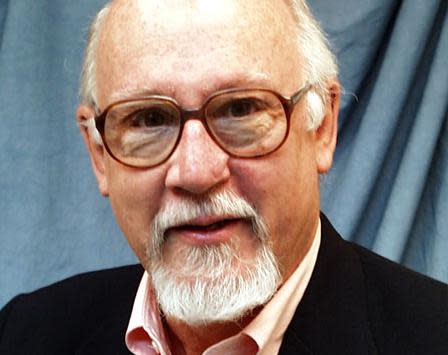Book chronicles Monroeville's 'To Kill A Mockingbird' play | DON NOBLE
- Oops!Something went wrong.Please try again later.
John M. Williams is a seasoned writer with a novel, “Lake Moon,” many essays, stories and reviews, several volumes of nonfiction, and a number of plays, including “Hiram: Becoming Hank,” written with Rheta Grimsley Johnson, about the boyhood of Alabama troubadour Hank Williams.
In this volume, “Monroeville and the Stage Production of ‘To Kill a Mockingbird’,” he has done a highly readable, balanced job writing about the "Mockingbird" play and has even taken a few tentative but brief forays into discussing some of the squabbles, lawsuits and tensions surrounding the play.
More: 'The Secret Book of Flora Lea' shows power of storytelling | DON NOBLE
The central character is, however, rightly, Kathy McCoy, who came to Monroeville in 1990 to manage the Monroe County Heritage Museums, and who directed the play for many years.
There had been troubles and complications for decades. In 1961, when the art director for the "Mockingbird" film came to town, he decided to reproduce the courtroom and Macomb rather than film there.
Monroeville was more run down than picturesque.
By 1990, the courthouse was in such disarray there was a barbershop inside and there were “winos sleeping on the back steps and in the balcony in donated exhibit quilts.”
Things would turn around after the building was put on the National Register of Historic Places, making it illegal to tear it down.
The first incarnation of the play was an adaptation by Christopher Sergel in 1969, written for schoolchildren and amateurs, performed in small towns around the country.
Then it was decided that the play could be performed right there in Monroeville.
The play morphed over time, going from one act to two, with the first act outside, then adding the choir.
From the start, however, the cast were amateurs, amazingly dedicated and surprisingly good.
The children, Scout, Jem and Dill, had to be recast periodically, of course, as the youngsters grew, but many of the cast played their roles for 10, 15 years. Williams rightly profiles and celebrates many of them.
![Harper Lee, author of "To Kill A Mockingbird," smiles in this 2007 file photo. [The Associated Press]](https://s.yimg.com/ny/api/res/1.2/ZgcmcCxAzlvFI_itCdm5zQ--/YXBwaWQ9aGlnaGxhbmRlcjt3PTk2MDtoPTc3OQ--/https://media.zenfs.com/en/the-tuscaloosa-news/2182ec1aa9258f36cd9bd30074de81a3)
There are amusing anecdotes.
At church one day, McCoy told Brice Ulmer “she could see Bob Ewell in him.” Ewell is a quintessential redneck villain. Ulmer nevertheless took the part.
The play’s fame spread. It sold out in Monroeville and they were invited to perform in Israel, in the Kennedy Center in D.C. and in England. This was really exciting for the Monroevilleans, but also challenging. Moving the sets, costumes and the cast to these places was an adventure but it always went surprisingly well, although some of the English audience admitted they could not really understand the redneck accents.
Wherever they played, they chose the jury members from the audience and always the jury wanted to acquit. But it can’t be done.
Williams, understandably, could not resist some remarks about the always contentious relationship between the famous author, the production, the town, and the museum, including the squabble over the bird image on mugs and tea towels. He touches on the controversy over publication of “Go Set a Watchman” and comes nearly to the present discussing the suits and countersuits over the changes in the 2019 New York City production of "Mockingbird."

Don Noble’s newest book is Alabama Noir, a collection of original stories by Winston Groom, Ace Atkins, Carolyn Haines, Brad Watson, and eleven other Alabama authors.
“Monroeville and the Stage Production of ‘To Kill a Mockingbird’”
Author: John M. Williams
Publisher: History Press, Charleston South Carolina, 2023
Pages: 190
Price: $23.99 (Paper)
This article originally appeared on The Tuscaloosa News: Book chronicles Monroeville's 'To Kill A Mockingbird' play | DON NOBLE

